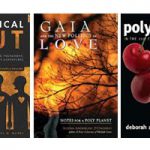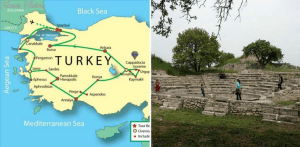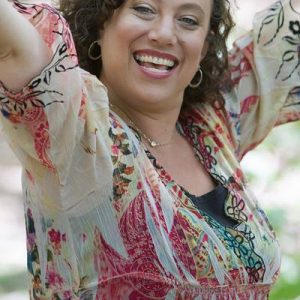Exploring Intimacy:
Cultivating Healthy Relationships through Insight and Intuition.
By Suzann Panek Robins.
New York: Rowman & Littlefield, 2010.
Reviewed by Serena Anderlini-D’Onofrio
In this inspiring and synergistic book, Suzann Robins presents a major paradigm shift about the relationship between our physiological and emotional health. In her view our emotional and physical lives are intricately related, so much so that the health of the one is proportional to the health of the other. So the paradigm shift she focuses upon can be summarized in her claim that “In order to have healthy relationships, we must be healthy” (106).
Let me contextualize this claim so that we can better understand what it actually means. The imperative of “being healthy” could be interpreted to imply that only healthy people can aspire to good relationship, while those afflicted with some illness “deserve” the punishment of bad ones. Or it could suggest the idea that those blessed with the good luck of physical health “deserve” the privilege to pair off with others like them, so that they can be blessed with minimal health-care bills. In reality, none of these less-than-generous understandings of the book’s key principle does justice to the book’s complexity and achievement. Indeed, the book provides a complex and innovative definition of health as integrated process of self-knowledge that relies on intuition rather than the effects of any consciousness altering substances, including the legal ones. This self-knowledge could be described as a form of gnosis–a path to knowledge whose motivation is love–because it is intended to generate the kind of self-love that extends to those who form the ecosystems that surround the self.
The book itself defines health in a way that integrates Eastern and Western philosophical principles, as it also demonstrates that the former are neither less wise, nor less grounded in empirical experience, nor less “scientific” than the latter might be. Hence it presents us with a concept of health that is independent of the amount of health-care products or procedures we are able to consume, and is proportional to our ability to connect with ourselves and our inner being. “Know thyself,” said Socrates, the philosopher of ancient Greece
“How can this highly modulated synergistic feat be achieved?” A reader might wonder. The secret is Suzann Robins’s in depth understanding of multilayered systems of knowledge, including Western psychology, medicine, and philosophy all the way back to Antiquity, and Eastern religious, medical, and philosophical traditions. Suzann Robins is a teacher and practitioner in various healing arts specialties, including hypnotherapy, personal growth, anger managements, and others. Her awareness of interconnections among different sets of ideas comes from experience. Healing-arts practitioners who have seen integration of healing modalities work over and over with clients, friends, and themselves, often come to the awareness that success is a result of expert, enchanted frequentation of different knowledge systems. When theory successfully integrates healing modalities from different knowledge systems, as happens in this book, it yields the concrete knowledge that is based in the practice of history.
Robins’s view of health is based on an integrative concept of medicine that accommodates holistic and allopathic practices in the same system. While holistic practices promote healing from within and from surrounding oneself with thriving ecosystems, allpathic practices serve to overcome crises that threaten a system’s homeostasis. Robin’s knowledge of various intersecting traditions helps to present a view in which these systems complement each other and address a core of experience we share as humans or individuals of the same species.
For example, she aligns the Western concept of a “life force” (historically linked to the vitalist movement and the beginning of psychoanalysis) with the Indian concept of Prana, the Chinese concept of Chi, and the classical concept of Eros. In the myth of Eros and Psyche, Eros is the deity who falls in love with the mortal Psyche. He is the energy that espouses matter (151-156). According to Fedro, in Plato’s Symposium, the dialog on love, Eros is “the most ancient of all gods.” He is part of the first generation of Greek deities, who represent the forces of nature, as in Chronos (time), Gea (the Earth), Aeolus (the wind), and Poseidon (the ocean). So in a way as the god of love, Eros is a form of Prana and Chi: He is the energy that animates matter. Robins’s contextualization of classical mythology brings out the parallelism between knowledge systems. She effectively shows that in their respective cultural contexts and traditions these concepts indicate the sense of life as the flow of energy that traverses and animates the material.
Another area where Robins’s synergistic analysis is quite effective is her design of a parallelism between the human body’s main organs (and the life functions they preside over) and the symbolic system of the Chakras which holistic medicine has absorbed from Hindu traditions. The alignment Robins shows here is quite convincing, as in the example of the Fifth Charka–also known as the Throat Charka–as the opening that presides over “our ability to express thoughts through the respiratory and bronchial apparatus that encompasses the vocal cords and the alimentary canal” (55). Key to Robins’s notion of integrative health is the concept of balance, which she also relates to the charka systems. These imaginary openings correspond to areas of the self where flows of energies are absorbed and recycled within the body’s ecosystem (10-12). Balance involves an inner landscape where charkas are aligned with one another in a system that presents neither blockages nor excessive leaks, which can resulting “chronic illness and fatal disease” (52). Robins’s analysis is complemented by a spat of exercises, surprisingly effective and simple, that help readers absorb her theories in a kinesthetic, in-the-body way. A major source in this section is the work of Anodea Judith.
A further step in integration of knowledge systems comes with Robins’s discussion of stages of growth in humans, which she also relates to interconnected foci in the charka system. This section integrates Sigmund Freud’s and Eric Erickson’s views of human development with the holistic perspective. For example, Robins provides an association of the Root Charka–located in the sacrum and usually representing the connection with the Earth–as symbolic of a baby’s growth during the first two years, when attachment is essential to the baby’s ability to develop survival skills such as receiving and absorbing touch and food (94-95).
Finally, Robins proposes an integration that takes into account the color symbolism that characterizes the charka system in most representations. This is also presented experientially, as an exercise. The Sixth Charka is considered the site of intuition, or “third eye.” In Hindu cultures it is often represented with a dot painted in the middle of one’s forehead, a little above the eyebrows. Its color symbolism is “dark indigo or navy blue,” which appropriately represents the vast possibilities open to the imagination from what looks like “a clear night sky” (126). In Robins’s book, intuition is also described as “the sixth sense,” a sense that synergizes the information the other five senses provide in a type of knowledge that respects the energetic (as well as material) nature of things and therefore enables the path to love. This love manifests as the kind of intimate knowledge of the self that enables one’s body to function like a healthy ecosystem. It is from the care for this ecosystem–and its surrounding bodies and energy flows–that the health of one’s relationships emanates in an ebb and flow of dynamic exchanges that result in a healthy homeostasis. Relationships are not healthy to the extent that they follow structures marked by conventions, including marriage, monogamy, heterosexuality, exclusivity, or longevity. They are rather healthy because they respect the ecosystemic balance of those involved in them.
So there is a productive way to read Robins’s central thesis: It is what J. L. Austin would call an “illocutionary speech act,” namely a pronouncement that actualizes itself by virtue of its own intention. “We must be healthy” is not a descriptor of a putative state of health that preexists a given relationship, but rather a dynamic balance that evolves as we become intent in getting to know ourselves and each other intimately, and thus enhance our capabilities to know and respect others the way we do to ourselves. It is a statement designed to generate the reality it alludes to rather than to simply describe it as what is. In articulating her complex theoretical position, Robins also relies on the work of Karl Jung and Jean Piaget.
From this book one does not get easy advice or recipes for “happiness,” as happens in many of today’s manuals and guidebooks about “better relationships.” Rather, one gets a guided tour of the various ways in which happiness, and balance, and the health of relationships have been constructed in the cultural contexts humanity has inhabited in the modern era, and of how, with that knowledge, we can invent and choose the path and combination of knowledge systems that will work for us. This is a much valued feat, since a manual’s promise to hold the “right” recipe for a happy personal life is always as short lived as that of the next such book.
Indeed, the idea of offering recipes that yield the same result regardless of who uses them is too simplistic to honor Robins’s understanding of what knowledge is. A prevalent myth of Western modernity is that Western knowledge is “scientific” while other traditions are enshrouded in legend and anecdotal thinking. Of course this is self-deceptive and reflects Western ignorance of its own power over other knowledge systems, rather than any actual scientific superiority. Further evidence of the deceptiveness of this myth is the failure of Western modernity to design styles of development that model sustainability. Knowledge steeped in tradition is scientific because the evidence of its validity is in history. Robins offers the grace of treating complementary traditions as such and represents them as equal. Her refusal to rank these traditions is a way to enter the fray of the politically charged discussion about what qualifies as science. For example, in talking about integrative medicine as a synergy of conventional and holistic medicine, Robins discursively establishes an equality that unfortunately is still far from being real.
Because of ethnocentric prejudice that favors Western modalities of knowledge, conventional medicine is still associated with “science” in the mind of most people. Robins’s expert interweaving of modalities and sources exposes this prejudice for what it is. Her book is a refreshing read whose mixture of research, practice, and theory will generate awareness where there still is cultural resistance.
Serena Anderlini-D’Onofrio, PhD
Cabo Rojo, Puerto Rico, May 2010
http://polyplanet.blogspot.com


